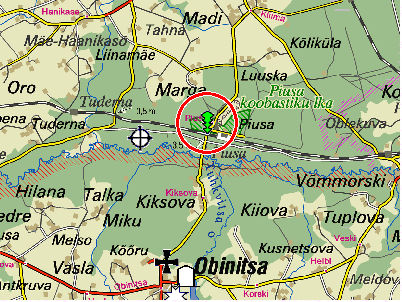|
Piusa caves have emerged as a result of manual mining of glass-sand during 1922-1970 and represent a system of underground galleries with
sandstone columns and vaulted ceilings. Since 1970 pit-mining was started. In 1950s hibernating bats were discovered in the caves. Since 1958
when bats became legally protected in Estonia, they have been counted here regularly. Count data shows the constant increase in number of bats
hibernating in Piusa Caves. In 1999 over 3000 bats from five species were counted here: pond bat (Myotis dasycneme), Daubenton’s bat (Myotis
daubentonii), Brandt’s bat (Myotis brandtii), brown long-eared bat (Plecotus auritus) and northern bat (Eptesicus nilssonii). In 1981 cave came
under protection rules for the Nature Reserve of Piusa Caves. The aim of the Reserve is to protect the biggest colony of bats in Baltic states
and to preserve geologically interesting artificial object (caves).
Because of the potential falls in caves and because no disturbance of bats is allowed, there are several
RESTRICTIONS of movement and action in the Reserve ...
- any movement is allowed on marked path only;
- caves can be entered only at places for that purpose;
- caves can be entered on each visitor own responsibility;
… and PROHIBITIONS:
- making campfires;
- camping and staying overnight;
- littering.
|











